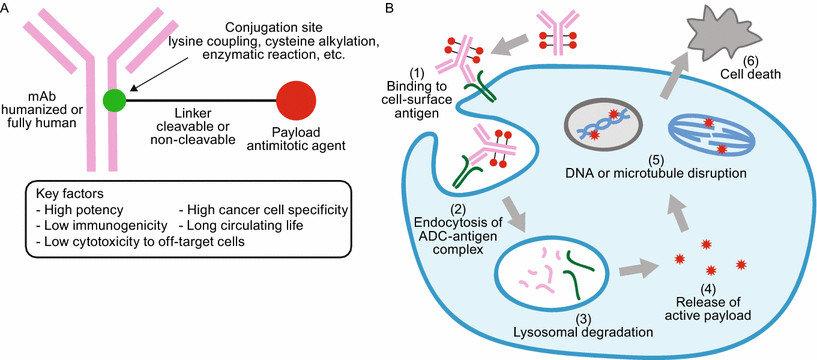Antibody-drug conjugates (ADCs) represent an exciting frontier in targeted cancer therapy. By linking a potent cytotoxic drug (the payload) to a monoclonal antibody, ADCs ensure precise delivery to cancer cells, sparing healthy ones. Learning about ADC Payloads involves understanding how the performance of ADCs greatly depends on the release and metabolism of the ADC payload. Let’s dive deep into the strategies and methods used to study ADC payload release and metabolism.
Introduction to ADCs
ADCs have emerged as an innovative therapeutic option, with the potential to change the landscape of cancer treatment. Their efficacy lies in their design: an antibody that recognizes and binds to a specific antigen in cancer cells, and a payload (a cytotoxic agent) designed to destroy the cell once inside.
The Significance of ADC Payload Release
The success of ADCs hinges on the proper release of the payload inside the target cells. If the payload is released too early, it may damage healthy cells. If it’s released too late or not at all, the therapeutic efficacy diminishes. Thus, understanding the release mechanisms is paramount.
The Complexity of ADC Metabolism
Once inside the cell, the ADC undergoes various metabolic processes. These can result in the release of the active payload or its metabolites. Since different metabolites can have varied toxicities and efficacies, comprehending ADC metabolism is essential for predicting the safety and efficacy of the treatment.
Key Strategies to Study ADC Payload Release
In Vitro Release Assays: By incubating ADCs with target cells, researchers can monitor the rate and mechanism of payload release.
pH Sensitivity Testing: ADCs might release their payload in response to the acidic environment of the endosome or lysosome. Testing ADCs under different pH conditions can provide insights into this.
Enzymatic Release Assays: Certain enzymes can trigger payload release. By exposing ADCs to these enzymes, scientists can evaluate the potential for enzymatic cleavage.
Methods for Investigating ADC Metabolism
Liquid Chromatography-Mass Spectrometry (LC-MS): LC-MS allows researchers to detect and quantify ADC metabolites. This method is especially valuable as it can differentiate between various metabolites based on their mass and charge.
Immunoblotting: This method helps identify the proteins bound to the ADC and understand the degradation pattern.
Fluorescence Imaging: By tagging the payload with a fluorescent molecule, researchers can visually track its intracellular journey.
Considerations in ADC Design
The design of the ADC linker (which connects the antibody to the payload) plays a significant role in payload release and ADC metabolism. Stable linkers ensure that the payload remains attached until the ADC reaches its target. On the other hand, cleavable linkers are designed to break down under specific
Challenges and the Way Forward
Studying ADC payload release and metabolism is not without its challenges. One major challenge is the vast heterogeneity of tumor cells. Different cells might process ADCs differently, leading to varied therapeutic outcomes. Furthermore, the dynamic tumor environment can influence ADC metabolism.
To overcome these challenges, researchers are:
Developing Novel Linkers: Novel linkers that respond to specific triggers within the tumor environment are being designed for controlled payload release.
Incorporating Advanced Imaging Techniques: Techniques like multiphoton microscopy allow scientists to track ADCs in real time within living organisms, providing invaluable insights.
Leveraging Computational Models: Predictive models can help anticipate how ADCs will behave in different scenarios, guiding the design process.
Also Read: Data Science for Healthcare: Improving Patient Outcomes with Analytics
Conclusion
ADCs hold tremendous promise in the realm of targeted cancer therapies. However, their success lies in the delicate balance of ensuring precise delivery and release of the payload. By leveraging cutting-edge techniques and strategies, researchers are continually enhancing our understanding of ADC payload release and metabolism. This knowledge will pave the way for more effective and safer ADC therapies in the future.

